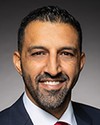I'm sorry to interrupt you, but I don't have much speaking time. I would like to clarify my question.
I'm going to ask you two very simple things.
First, are you able to provide the committee with a document indicating the project's financing structure? That could be very helpful.
Second, if you obtained financing from financial institutions, there are loan guarantees. Did the government provide them?
You probably read the report the Parliamentary Budget Officer, or PBO, released at the time the project cost was estimated at $21.4 billion. The report indicated that the project would not be profitable. We had to forget the whole idea of taking the revenue from the project and reinvesting it in clean energy.
The project cost is now estimated at $34 billion. However, I assume that the financial institutions will want to be paid back at some point. How are we going to repay that debt? Who did it come from? Who assumes responsibility? Is it the government?
I would like to get a clear picture of all the public funding that has been granted to Trans Mountain. The Deputy Prime Minister told us in 2022 that she wanted to change the structure and that there would be no additional public funding. Clearly, that money had to come from somewhere. Are you able to provide that information to the committee?




